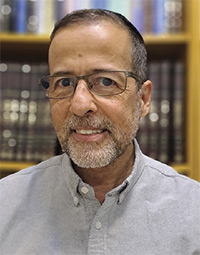MARK SLUTZKI, MKS OPHIR
Medical lasers are increasingly being used as vehicles for the precise delivery of energy in a variety of applications. The laser beam itself can be used as a treatment tool, cutting specific tissue at the required depth. It also serves as a production tool for the manufacturing of medical components, such as for the cutting and welding of implants. In any of these instances, it is vital to establish what specifically needs to be measured and when this information needs to be collected.
Just as with any precision industrial process, laser-based medical processes must be controlled and predictable. The right laser parameters must be suitably monitored, so that any unwanted drift that could affect what comes out of the process can be detected and responded to. And it is incumbent upon industry, trade organizations, and regulatory agencies to establish standards to promote the most effective use of lasers.
It is vital to establish what specifically needs to be measured and when this information needs to be collected.
We first need to identify the specific parameters that make our process happen — those are the ones we need to keep an eye on. For example, cutting is normally performed by focusing a beam such that the power density (W/cm2) inside a defined space is above a certain value. The power is obviously critical. The beam profile affects focus-ability as well as the shape of the space in which the work happens; this could make the difference between a good cut and a bad cut.
For example, one company recently produced an implantable device at two parallel facilities. The two production lines were supposed to be identical, but welds from one facility kept failing an internal inspection. The laser processes were designed to be the same, but measuring the beam profiles displayed that some of the optics had shifted out of alignment. In this case, those monitoring the equipment should have also been focusing on the beam profile, which is more complex than the measuring power.
Then, there is the question of where the measurement should take place, which is a decision that should probably be made by the system designer. Current FDA standards for medical devices only briefly (and not very specifically) address this question. Often, it is most practical to measure internally near the laser source (sampling the beam), or perhaps externally at the target location.
Measuring a small fraction of the beam internally (e.g., using a splitter) enables the use of smaller and faster sensors and doesn’t interrupt the process, but it won’t catch problems arising downstream. Measuring at the target location will reveal changes originating anywhere but involves the full beam power and interrupts the process. The choice will depend on the needs of the specific application, as well as the stability of the laser.
In applications where the potential instability involves fast changes (or where we simply want a fully automated solution), the sensor could have a direct interface to the system’s on-board controller, and its measurements could be used to provide automated feedback for accurate control and power stabilization.
In applications where the expected unwanted drifts in critical laser parameters are slower, it could be sufficient for a human operator to periodically measure the beam based on an internal schedule to verify that the performance is within go/no-go limits, or to have the system self-calibrate its laser drive.
The correctly configured application of recent, advanced technology in measurement devices can help designers of medical laser systems to optimize and control their processes, so that they can bring their solutions to market with confidence in their safety, efficacy, and profitability. Designers and regulatory agencies — who work in a harmonious balance to foster innovation and help ensure the safety of these systems — will facilitate this change.
Meet the author
 Mark Slutzki has been with Ophir since 2004 and serves as product manager for Power and Energy Measurement Solutions. Prior to that, he held similar positions in the semiconductor and telecom industries. Mark did military service as a research physicist working on special projects in the Israeli Air Force. He has a degree in electro-optics and applied physics; email: [email protected].
Mark Slutzki has been with Ophir since 2004 and serves as product manager for Power and Energy Measurement Solutions. Prior to that, he held similar positions in the semiconductor and telecom industries. Mark did military service as a research physicist working on special projects in the Israeli Air Force. He has a degree in electro-optics and applied physics; email: [email protected].
The views expressed in ‘Biopinion’ are solely those of the authors and do not necessarily represent those of Photonics Media. To submit a Biopinion, send a few sentences outlining the proposed topic to [email protected]. Accepted submissions will be reviewed and edited for clarity, accuracy, length, and conformity to Photonics Media style.